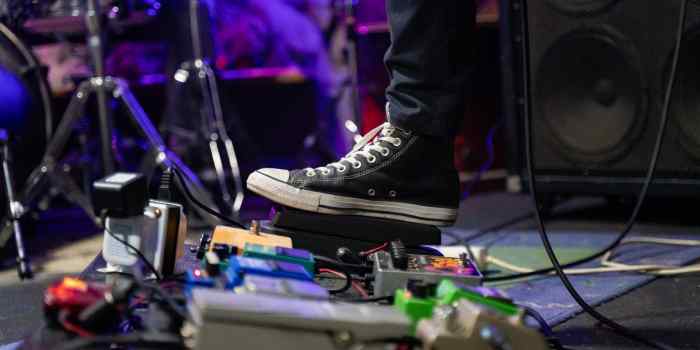If you are struggling to keep your guitar perfectly in tune, you’re in the right place. In this article, I’m going to explain how guitar pedals help in tuning, and trust me, it’s not as complicated as it may seem.
Tuning your guitar is like the foundation of a beautiful musical performance. If your guitar is not in tune, even the most skilled player won’t sound their best. This is where guitar pedals come into play, making the tuning process easier and simpler. Guitar pedals can make this whole process easy-peasy, and I’m here to break it down for you in simple terms.
So, let’s get started!
Let’s Get the Basics First
Before we dive into how guitar pedals help with tuning, let’s understand what these pedals are all about.
Guitar pedals are like little electronic helpers for your guitar. They are like magic buttons you step on, and they change how your guitar sounds. They’re not just for cool effects; they can also help you tune up your guitar perfectly.
Two Types of Tuning Pedals
Now, let’s talk about the two main types of tuning pedals you might come across:
Chromatic Tuners
These are your tuning buddies. They hear the notes you play and tell you if your strings are too high, too low, or just right. They have a screen that shows you what’s going on.
Polyphonic Tuners
These are the newer kids on the block. They let you strum all your guitar strings at once, and then they quickly tell you which ones need a bit of tuning. It’s super handy, especially if you’re in the middle of a live performance.
How Do Guitar Pedals Help In Tuning?

Here’s how guitar pedals help in tuning and make your guitar sound best:
Accuracy and Speed
Tuning pedals are like tuning experts. They are super accurate and quick, like a flash of lightning. Unlike older ways of tuning, such as tuning forks, which can be a bit tricky, tuning pedals make sure each string on your guitar is just right. This means your guitar will sound really, really good.
Say Goodbye to Background Noise
Imagine this: you’re on a noisy stage with lots of sounds around you – people talking, other instruments playing, and you need to tune your guitar. It can be tough. But tuning pedals are like special headphones for your guitar that block out all that distracting noise. This way, you can focus on getting your guitar in tune without any problems.
Super Easy to Use
Tuning pedals are as easy to use as your favourite app. Even if you’re in the middle of an exciting concert with bright lights, using them won’t stress you out. They have clear displays that you can see even in dim light. Just a simple tap with your foot and you can check and fix your tuning without any trouble.
Precision for Each String
Now, let’s talk about how precise they are. Chromatic tuners, the most common type of tuning pedals, can detect the pitch of each string with amazing accuracy. They’ll tell you if even one tiny string is slightly out of tune. This super attention to detail makes sure your guitar sounds absolutely perfect, one string at a time.
Real-Time Help
Tuning pedals is like having a partner when you’re learning to tune. They give you feedback instantly, showing you exactly how close you are to getting your guitar perfectly in tune. You’ll see it on their display, making it very clear whether you’ve got it just right or almost there. This visual help makes tuning a piece of cake, especially if you’re just starting.
Tips for Getting the Most Out of Your Tuning Pedal
To make your tuning pedal your best friend, here are some easy tips:
Start with Calibration
Before you start using your tuning pedal, take a moment to set it. This is like teaching your pedal what “in tune” means for your guitar. It’s like telling your guitar the perfect sound for you.
Keep Extra Batteries Handy
If your pedal runs on batteries, always have some spares around. You wouldn’t want your pedal to die on you in the middle of a gig, right?
Trust Your Ears
Even though tuning pedals are super reliable, it’s also a good idea to trust your ears. Listen carefully to make sure your guitar sounds just the way you want it to.
Conclusion
So, by now, you know how guitar pedals help in tuning, how guitar pedals are like having your personal tuning assistant. Whether you’re playing on a stage, in your room, or anywhere else, tuning pedals makes sure your guitar always sounds its very best.
Moreover, whether you’re a beginner or a pro, they make sure your guitar always sounds awesome so you can play with confidence.
FAQs
Calibrating your tuning pedal is simple. Follow the pedal’s user manual instructions, usually plugging in your guitar and adjusting settings until it recognises your desired tuning.
Tuning pedals are versatile and work for acoustic and electric guitars, making them a handy tool for all guitarists.
Absolutely! Tuning pedals are not limited to guitars and can be used for various stringed instruments, including ukuleles and mandolins.
Battery replacement frequency depends on usage, but it’s a good practice to have spare batteries and replace them as soon as you notice a drop in pedal performance.